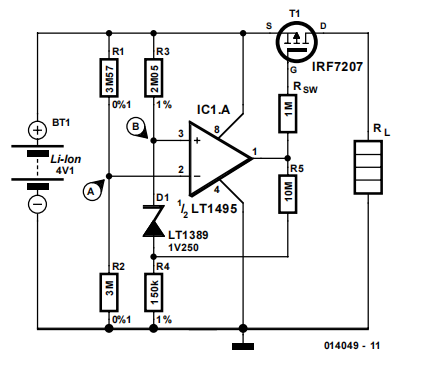Find the best antennas for TV, radio, and wireless. Compare top antenna deals, use free antenna calculators, follow DIY guides, and buy high-performance antennas with confidence.
2.5-GHz Signal Source
Step-up Switching Regulator with Integrated Current Limit
Li-Ion Protection Circuit
Mains Powered
Simple mV Source
This design can be used to simulate millivolt (mV) sensor signals for industrial control systems. Most of the new sensors used to day include some form of ‘intelligence’ at the measurement head, that is, the point at which the sensor comes into contact with what it is to measure. At this point, the sensor signal is conditioned/digitized and fed into a microcontroller that transmits a digital representation of the sensor value to the remote control system. However, there are still a number of ‘elderly’ control systems still in the field that have the intelligence remote from the sensor head. These systems rely on field wiring to convey the measured signal back to the control system.
During commissioning of these types of plant, it is useful to simulate the sensor signal to ensure amongst other things, that the sensor signal gets back to the correct terminals on the control system as they invariably pass through various junction boxes on the way. It can also be used to ensure that the control system operates correctly in response to the sensor signal. The design shown here has been used by the author to ‘bench test’ a control system prior to being installed. Please note that the design is only suitable for simple simulation and is not accurate enough for calibration purposes. Power from a ‘plugtop’ PSU (when bench testing) or a battery is fed to three current sources (diodes). Of these, I1 generates a 1.00 mA current signal, which when switched across the 100-Ω pot creates a 100-mV signal. Likewise, I2 generates a 0.25-mA signal which generates 25 mV across the pot. Current source I3 develops 3.0 mA and is used to illuminate the LED to give a power indication. The selected current source is switched via S2 to the 10-turn pot. Switch S1 is used to cleverly swap the polarity of the output signal. If the Type MTA206PA DPDT switch from Knitter is used, you get a centre-off position which actually shorts out the output signals (S1 pins 2 and 5) together, ensuring a zero output signal.





